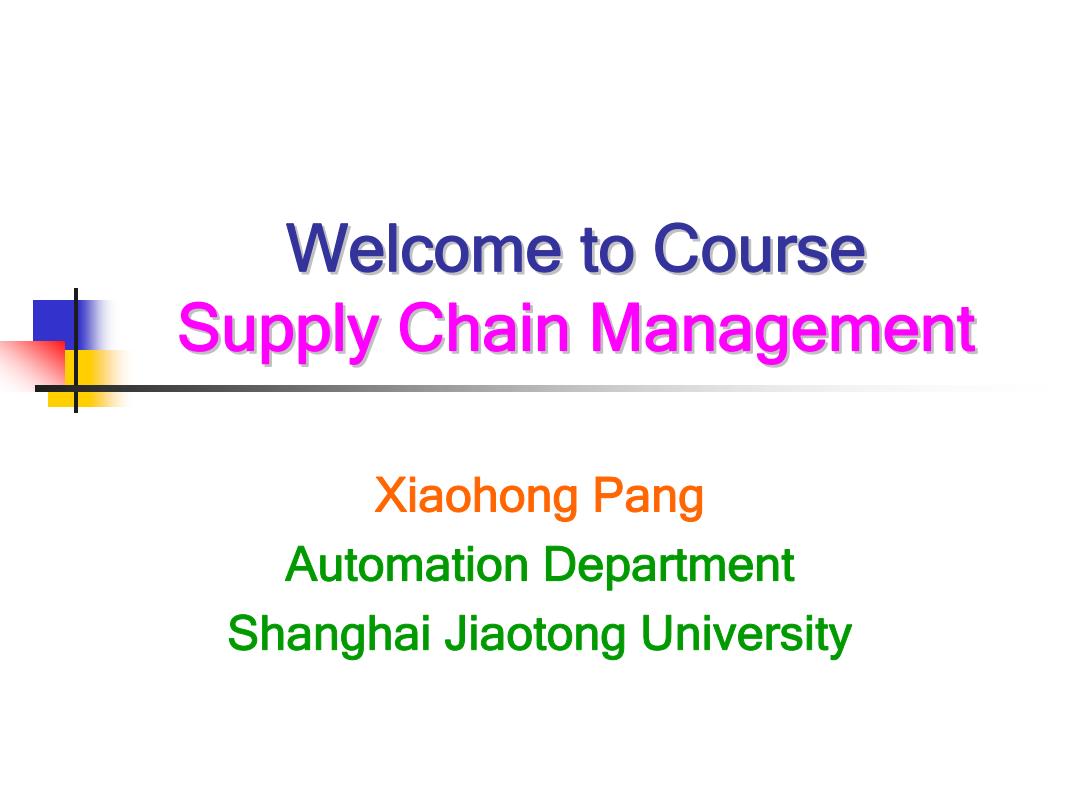
Welcome to Course Supply Chain Management Xiaohong Pang Automation Department Shanghai Jiaotong University
Welcome to Welcome to Course Supply Chain Management Supply Chain Management Xiaohong Pang Automation Department Shanghai Jiaotong University

ABOUT ME Dr.Xiaohong Pang xhpang@situ.edu.cn Associate Professor of Automation Department School of Electronic Information and Electrical Engineering Shanghai Jiaotong University My research interests focus on the issues and strategies of supply chain management and its applications. My current interests are in Student- Centered Teaching and Learning, Collaborative Learning,etc
Dr. Xiaohong Xiaohong Pang xhpang@sjtu.edu.cn Associate Professor of Automation Department School of Electronic Information and Electrical Engineering Shanghai Jiaotong University ABOUT ME ABOUT ME My research interests focus on the issues and strategies of supply chain management and its applications. My current interests are in Student - Centered Teaching and Learning, Collaborative Learning, etc.
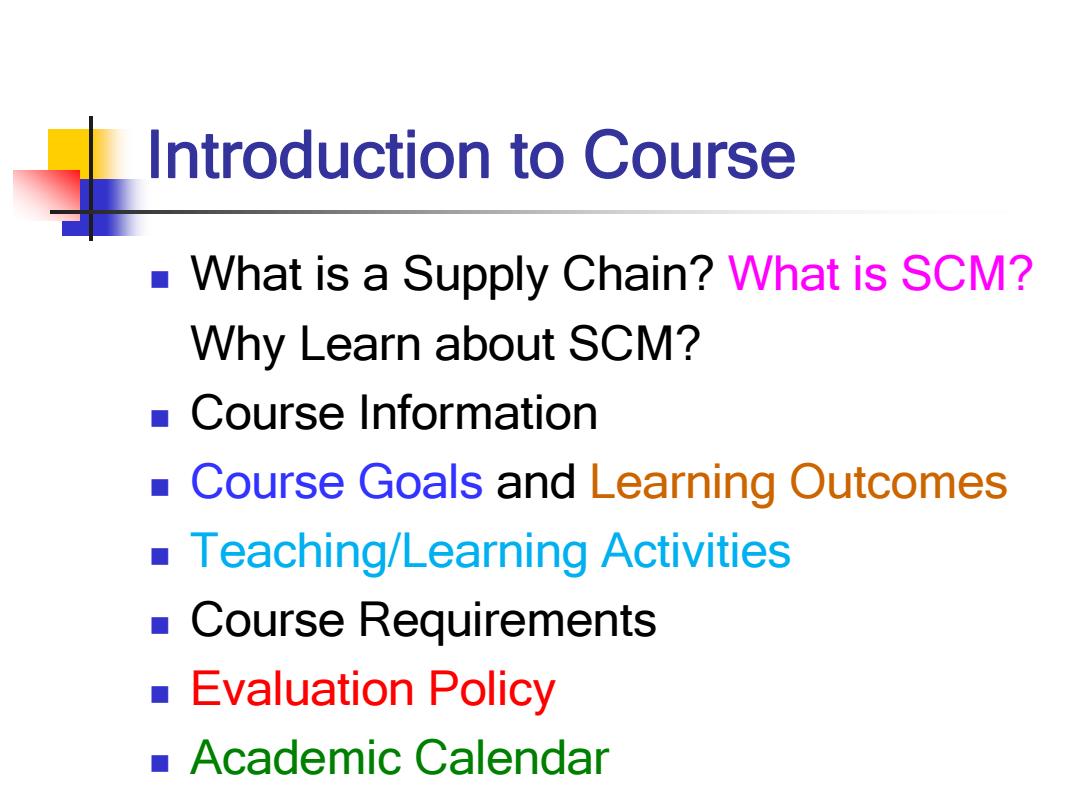
Introduction to Course What is a Supply Chain?What is SCM? Why Learn about SCM? Course Information ■ Course Goals and Learning Outcomes Teaching/Learning Activities ■Course Requirements Evaluation Policy Academic Calendar
Introduction to Course What is a Supply Chain? What is SCM? Why Learn about SCM? Course Information Course Goals and Learning Outcomes Teaching/Learning Activities Course Requirements Evaluation Policy Academic Calendar
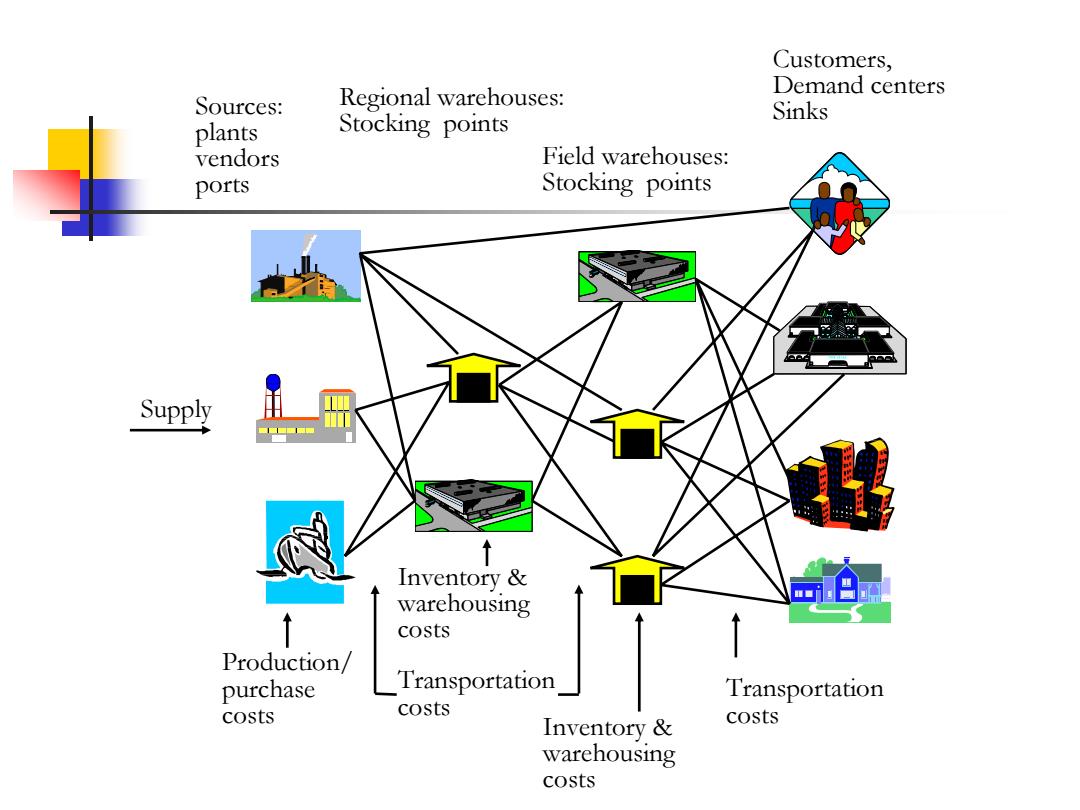
Customers, Sources: Regional warehouses: Demand centers Sinks plants Stocking points vendors Field warehouses: ports Stocking points Supply Inventory warehousing costs Production/ purchase Transportation Transportation costs costs Inventory costs warehousing costs
Supply Sources: plants vendors ports Regional warehouses: Stocking points Field warehouses: Stocking points Customers, Demand centers Sinks Production/ purchase costs Inventory & warehousing costs Transportation costs Inventory & warehousing costs Transportation costs
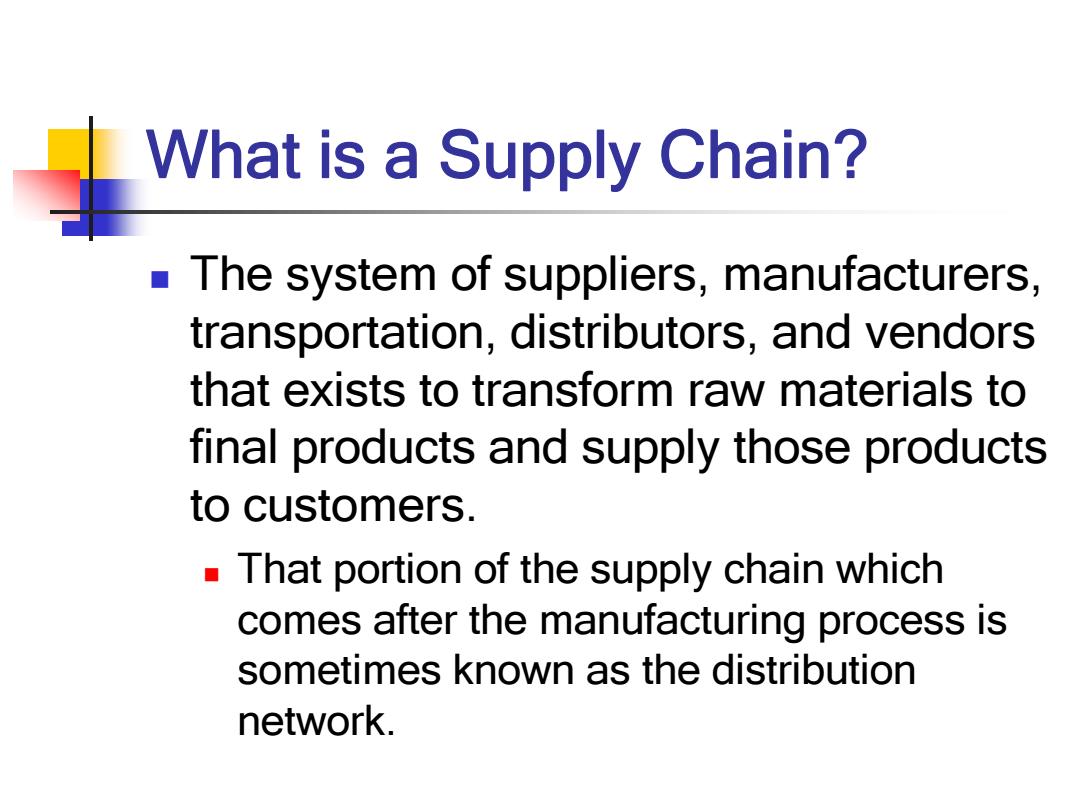
What is a Supply Chain? The system of suppliers,manufacturers, transportation,distributors,and vendors that exists to transform raw materials to final products and supply those products to customers. That portion of the supply chain which comes after the manufacturing process is sometimes known as the distribution network
What is a Supply Chain? The system of suppliers, manufacturers, transportation, distributors, and vendors that exists to transform raw materials to final products and supply those products to customers. That portion of the supply chain which comes after the manufacturing process is sometimes known as the distribution network
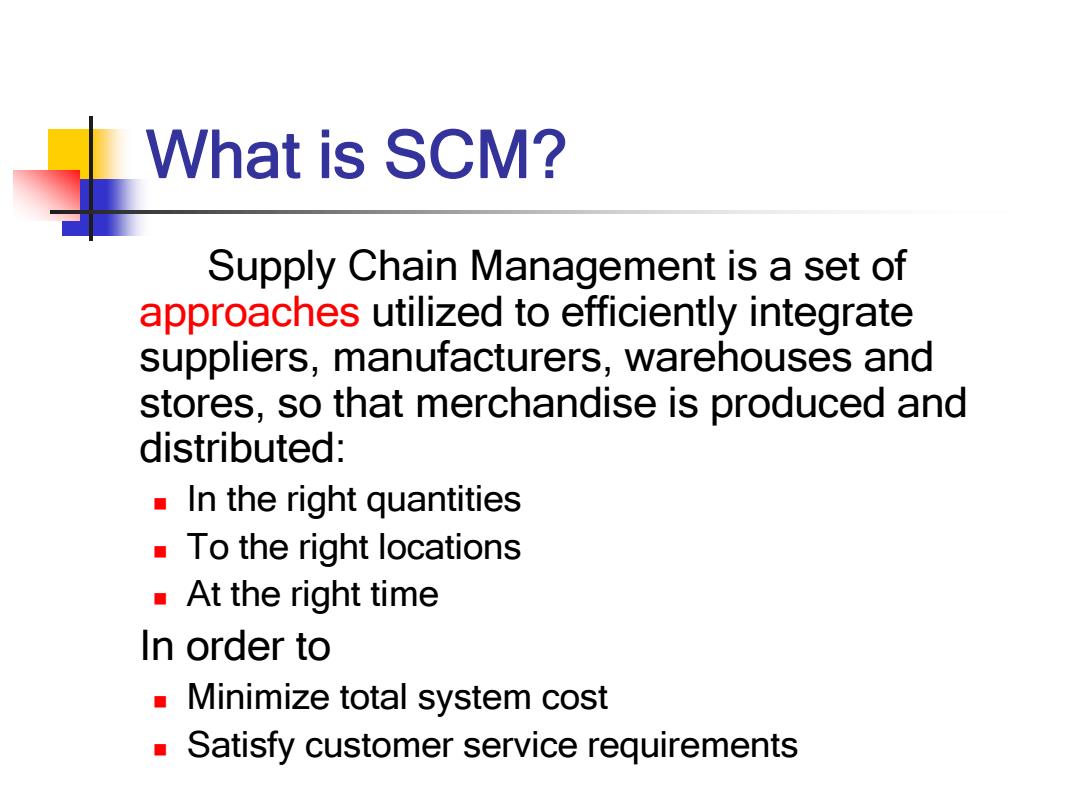
What is SCM? Supply Chain Management is a set of approaches utilized to efficiently integrate suppliers,manufacturers,warehouses and stores,so that merchandise is produced and distributed: In the right quantities To the right locations At the right time In order to Minimize total system cost Satisfy customer service requirements
What is SCM? Supply Chain Management is a set of approaches utilized to efficiently integrate suppliers, manufacturers, warehouses and stores, so that merchandise is produced and distributed: In the right quantities To the right locations At the right time In order to Minimize total system cost Satisfy customer service requirements
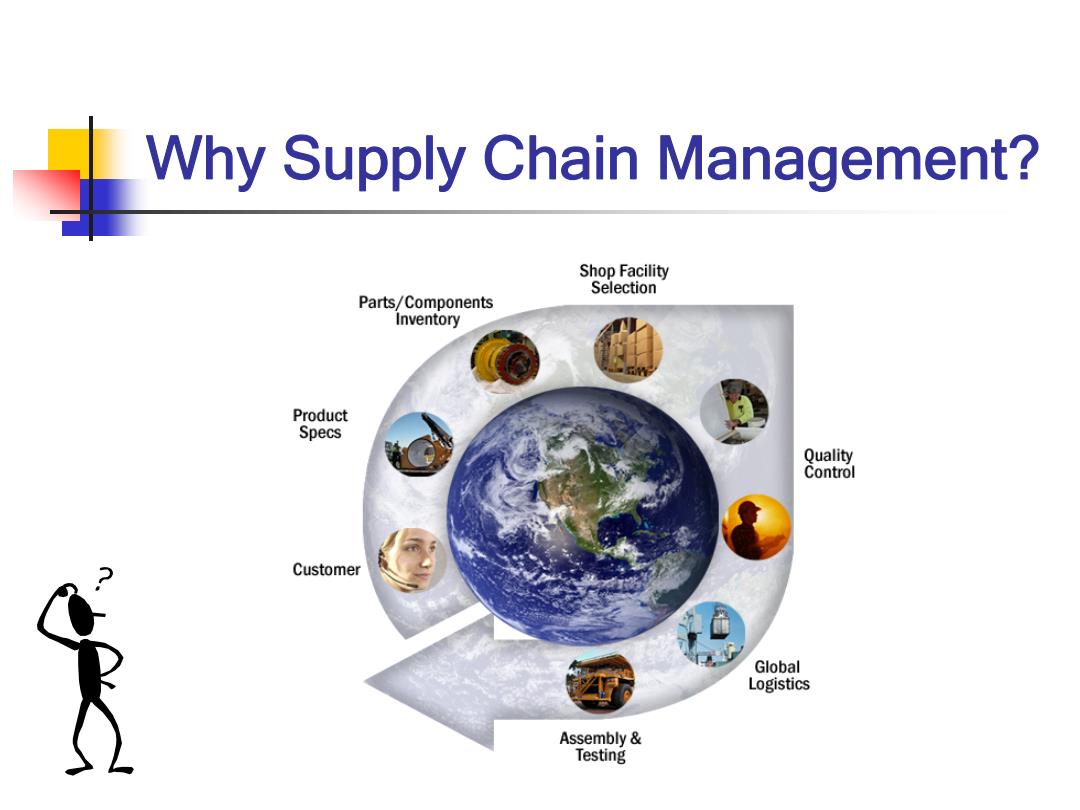
Why Supply Chain Management? Shop Facility Selection Parts/Components Inventory Product Specs Quality Control Customer Global Logistics Assembly Testing
Why Supply Chain Management?
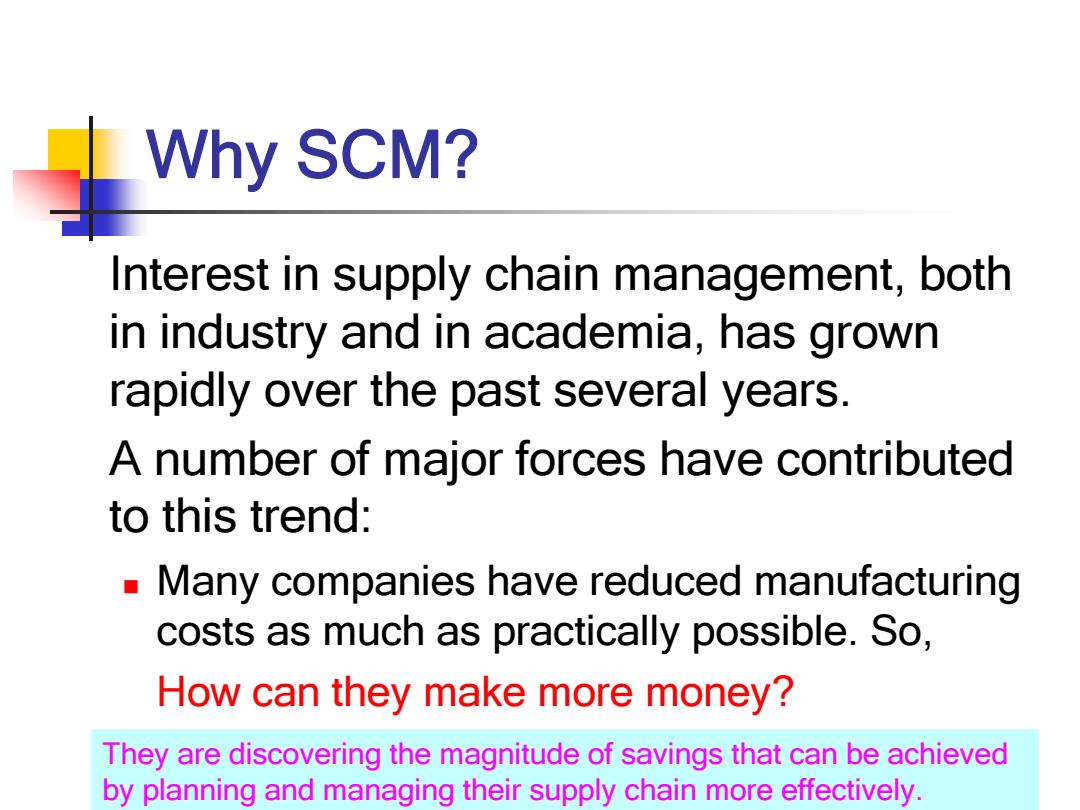
Why SCM? Interest in supply chain management,both in industry and in academia,has grown rapidly over the past several years A number of major forces have contributed to this trend: Many companies have reduced manufacturing costs as much as practically possible.So, How can they make more money? They are discovering the magnitude of savings that can be achieved by planning and managing their supply chain more effectively
Why SCM? Interest in supply chain management, both in industry and in academia, has grown rapidly over the past several years. A number of major forces have contributed to this trend: Many companies have reduced manufacturing costs as much as practically possible. So, How can they make more money? They are discovering the magnitude of savings that can be achieved by planning and managing their supply chain more effectively
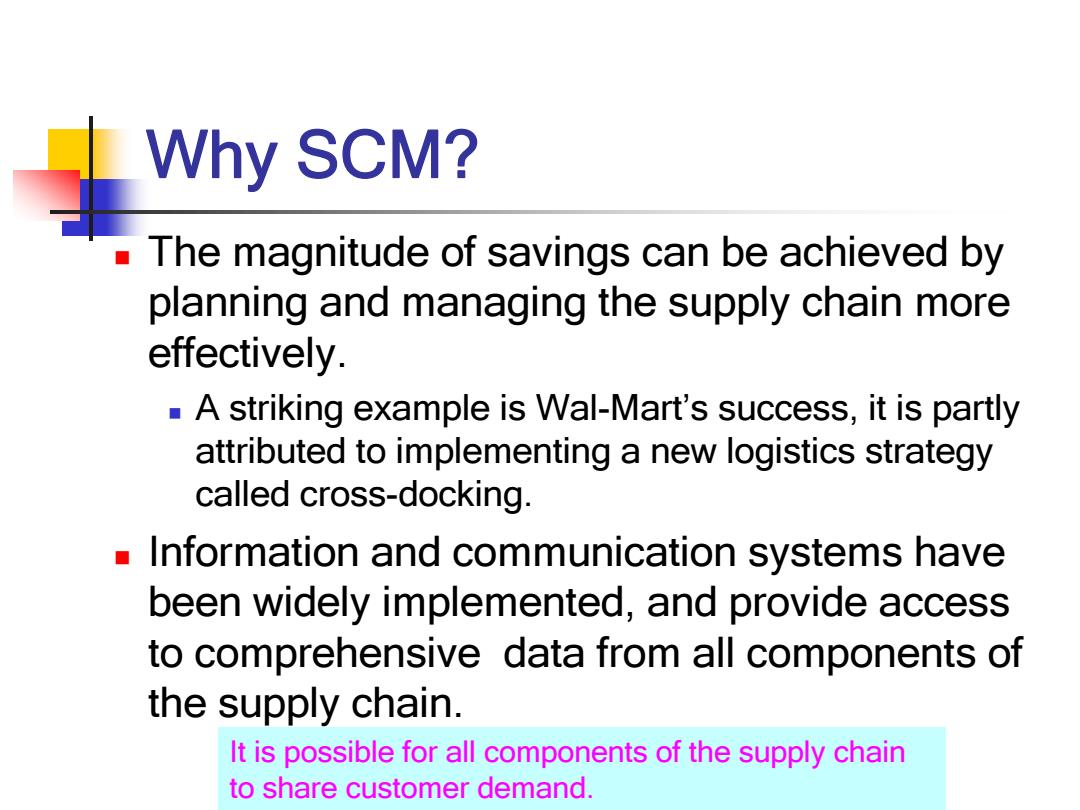
Why SCM? The magnitude of savings can be achieved by planning and managing the supply chain more effectively. -A striking example is Wal-Mart's success,it is partly attributed to implementing a new logistics strategy called cross-docking. Information and communication systems have been widely implemented,and provide access to comprehensive data from all components of the supply chain. It is possible for all components of the supply chain to share customer demand
Why SCM? The magnitude of savings can be achieved by planning and managing the supply chain more effectively. A striking example is Wal-Mart’s success, it is partly attributed to implementing a new logistics strategy called cross-docking. Information and communication systems have been widely implemented, and provide access to comprehensive data from all components of the supply chain. It is possible for all components of the supply chain to share customer demand
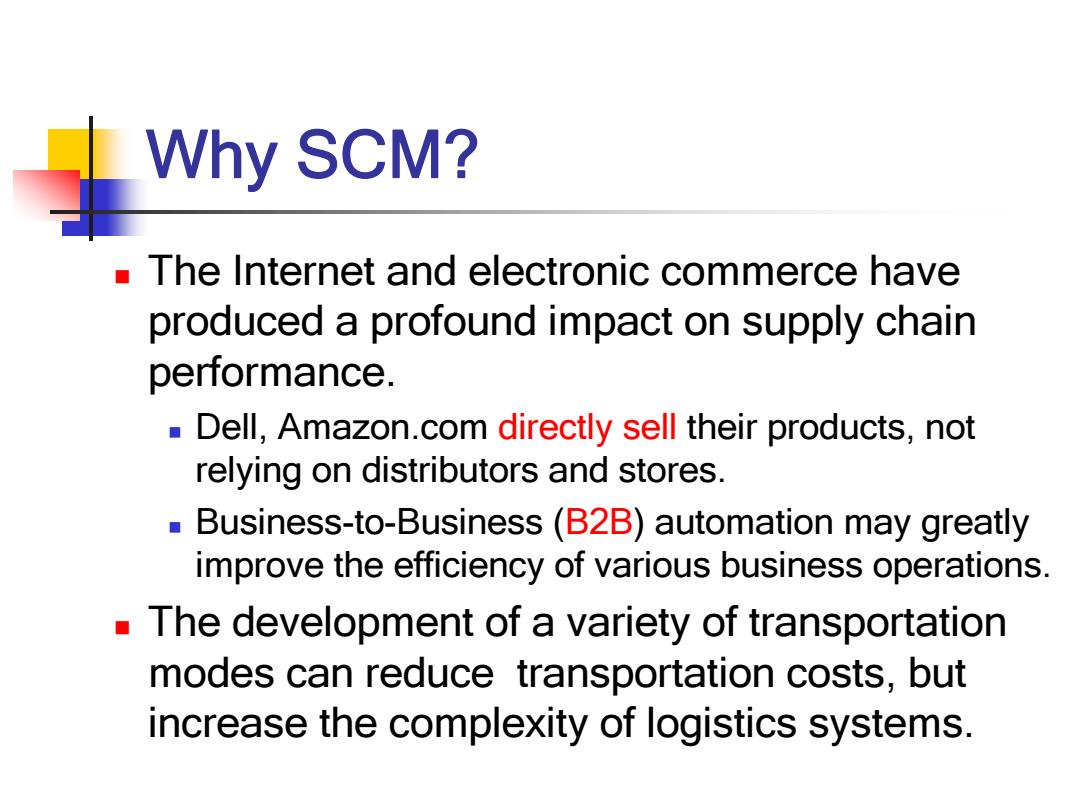
Why SCM? The Internet and electronic commerce have produced a profound impact on supply chain performance. Dell,Amazon.com directly sell their products,not relying on distributors and stores. Business-to-Business(B2B)automation may greatly improve the efficiency of various business operations. The development of a variety of transportation modes can reduce transportation costs,but increase the complexity of logistics systems
Why SCM? The Internet and electronic commerce have produced a profound impact on supply chain performance. Dell, Amazon.com directly sell their products, not relying on distributors and stores. Business-to-Business (B2B) automation may greatly improve the efficiency of various business operations. The development of a variety of transportation modes can reduce transportation costs, but increase the complexity of logistics systems